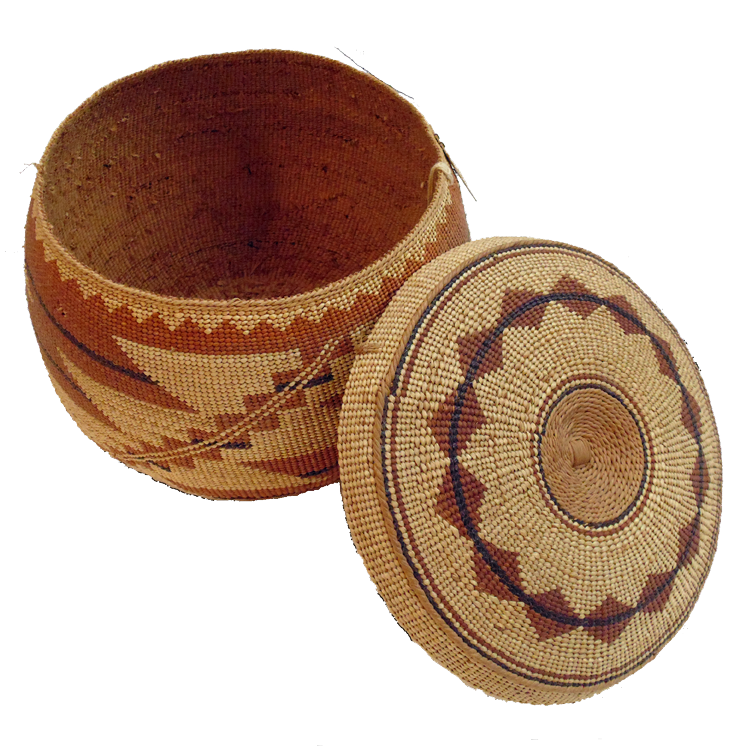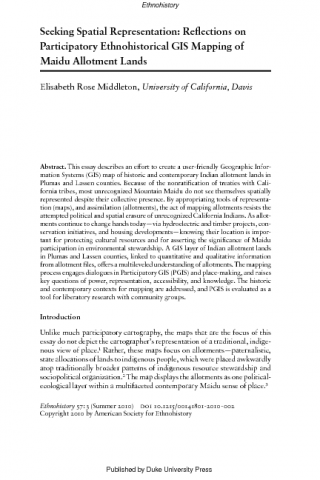Seeking Spatial Representation: Reflections on Participatory Ethnohistorical GIS Mapping of Maidu Allotment Lands
This essay describes an effort to create a user-friendly Geographic Information Systems (GIS) map of historic and contemporary Indian allotment lands in Plumas and Lassen counties. Because of the non ratification of treaties with California tribes, most unrecognized Mountain Maidu do not see themselves spatially represented despite their collective presence. By appropriating tools of representation (maps), and assimilation (allotments), the act of mapping allotments resists the attempted political and spatial erasure of unrecognized California Indians. As allotments continue to change hands today—via hydroelectric and timber projects, conservation initiatives, and housing developments—knowing their location is important for protecting cultural resources and for asserting the significance of Maidu participation in environmental stewardship. A GIS layer of Indian allotment lands in Plumas and Lassen counties, linked to quantitative and qualitative information from allotment files, offers a multileveled understanding of allotments. The mapping process engages dialogues in Participatory GIS (PGIS) and place-making, and raises key questions of power, representation, accessibility, and knowledge. The historic and contemporary contexts for mapping are addressed, and PGIS is evaluated as a tool for liberatory research with community groups.
Provenance: Contributed to Sipnuuk Food Security Collection by Dan Sarna, PhD candidate at the Department of Environmental Science, Policy, & Management at UC Berkeley, in association with his dissertation research as well as his collaboration on Objective 12 of the AFRI Food Security grant.
Rights: American Society for Ethnohistory


